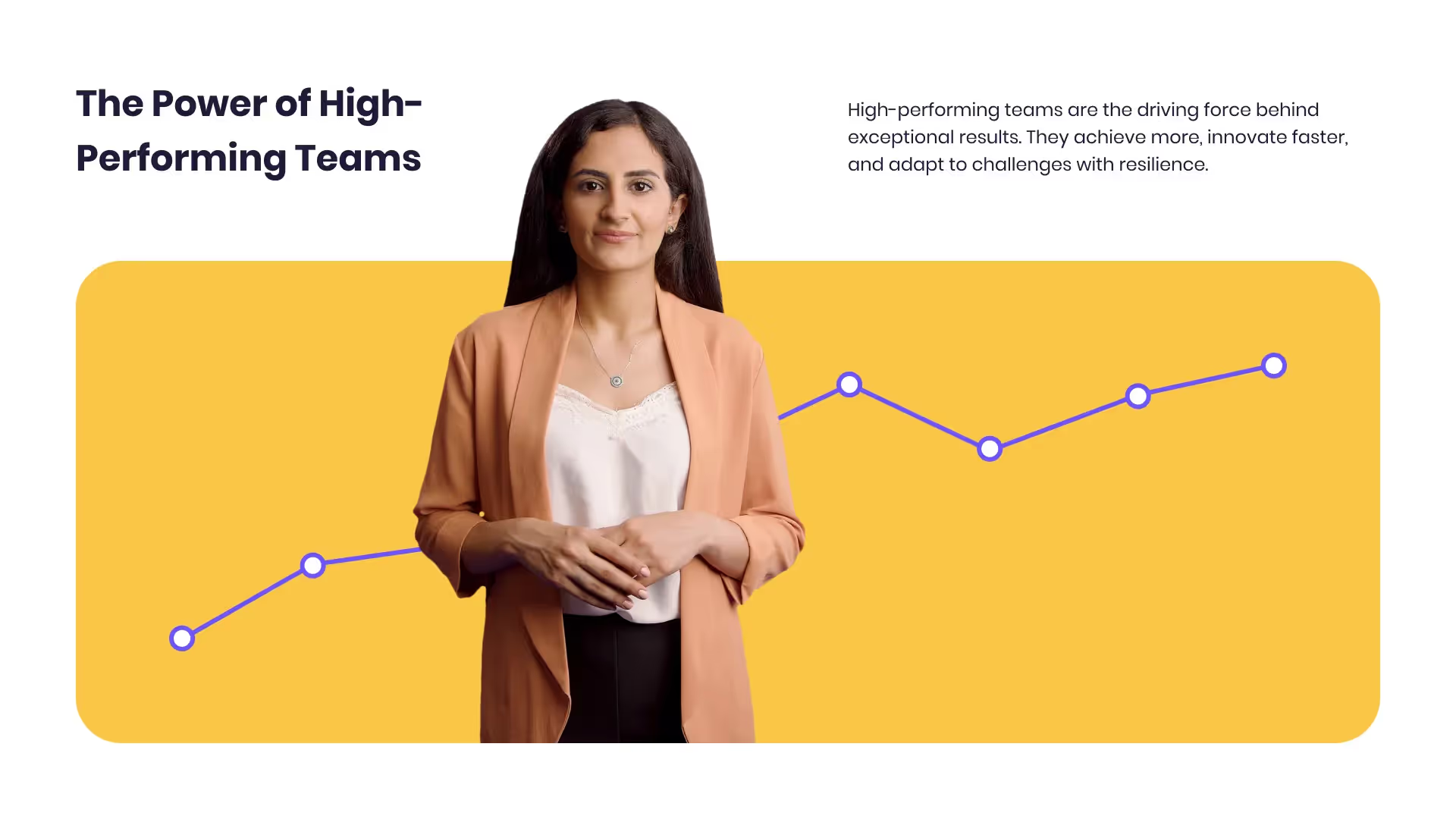Want a personalised avatar?
.avif)
Create an Instant Avatar in under a minute using your phone or camera. Fast, simple, and true to you.

Must Have Employee Training Courses to Upskill Your Workforce in 2025


Why upskilling in 2025 can’t wait
The case is simple. When people get the training they need, companies perform better. Teams are 17% more productive. Companies report 43% increased revenue after education programs, and for curriculum-based initiatives the number jumps to 60%. Support costs drop too—by 27% in many cases.
People also want to learn. 8 in 10 employees say learning gives them purpose, and 7 in 10 say it boosts their connection to the company. That matters if you care about retention.
Look at market signals. Enterprise leaders are not waiting. Amazon’s $1.2B Upskilling 2025 and AT&T’s large-scale reskilling push show where things are heading. The skills gap isn’t a future problem. It’s here now.
How to choose the right courses (training cycle and ROI)
Follow a simple training cycle. eCornell’s “Employee Training & Development” lays out a practical approach: diagnose, design, enable transfer, and measure. Start with a needs analysis by role and risk. Map what’s actually broken or at risk. Don’t default to a course when a process change or tool fix would solve the problem faster.
Then design the mix. Some content belongs in short microlearning. Some need live virtual sessions with practice. Some should be interactive videos with scenarios. Plan reinforcement. Manager support and on-the-job prompts matter more than long lectures.
Measure beyond completion. Track behavior change and business KPIs. Only calculate ROI when the data is clean enough to be credible. If you can’t show reduced incidents, faster project cycles, or improved sales metrics, the course probably needs rework.
How to use Colossyan for this step:
Turn SOPs, policies, and slide decks into pilot videos fast with Doc2Video and PPT/PDF Import.
Make scenarios using Interaction (MCQs and Branching) and Conversation Mode to push decisions, not just recall.
Export SCORM packages and use our Analytics to see completion, scores, and time watched, then adjust content.
The 12 must-have employee training courses for 2025
Here’s the short list. It’s opinionated on purpose.
1. Anti-harassment and workplace civility
What to cover: recognition, reporting, bystander action, manager duties.
Field example: Mineral delivered 1.7M anti-harassment courses across 1M+ businesses.
Build fast in Colossyan: Templates and Brand Kits for policy alignment; Conversation Mode for gray areas; Branching for “what would you do?”; SCORM for pass/fail.
Measure: completion, quiz accuracy, reporting trends.
2. Workplace safety (OSHA/general safety)
What to cover: hazards, ergonomics, PPE, incident reporting.
Field example: Mineral delivered 1.0M safety courses, so the demand is real.
Build in Colossyan: screen recording for equipment/software; hazard-spotting interactions; technical Pronunciations; SCORM 1.2/2004.
Measure: near-miss and incident rates, audit findings.
3. Cybersecurity essentials
What to cover: phishing, passwords, device/data handling.
Field example: Mineral’s cybersecurity package aligns with employer needs.
Build in Colossyan: Branching for phishing simulations; Instant Translation for global rollout; Analytics to spot weak topics.
Measure: phishing simulation click rates, policy acknowledgment, quiz scores.
4. Diversity, equity, inclusion, and belonging
What to cover: unconscious bias, harassment recognition, inclusive leadership, multigenerational teams.
Field example: Rutgers OCPE’s DEI catalog covers these with multiple formats.
Build in Colossyan: Conversation Mode to practice responses to microaggressions; varied Voices for representation; on-brand visuals.
Measure: inclusion survey results, manager behavior observations, retention by demographic.
5. Microsoft and digital productivity
What to cover: Excel (L1–L4, Pivot Tables, Power Query/Flash Fill), PowerPoint, Outlook, Visio.
Field example: Rutgers offers deep Microsoft training with previews.
Build in Colossyan: screen recordings for workflows; PPT Import to convert guides; AI Image Generation to illustrate datasets.
Measure: time-to-complete tasks, template adoption, reduced support tickets.
6. Communication and presentation skills
What to cover: storytelling, virtual delivery, executive presence, feedback.
Field example: Rutgers Communication/Presentation tracks run from seminars to VILT.
Build in Colossyan: Avatars to model good/bad presentations; audience analysis MCQs; Pronunciations for brand/product names.
Measure: presentation rubrics, stakeholder feedback, meeting outcomes.
7. Leadership and change management
What to cover: new manager ramp, coaching, difficult conversations, leading change, remote teams, SMART goals.
Field signal: enterprise reskilling efforts show leadership leverage is non-negotiable.
Build in Colossyan: Conversation Mode for role-plays; Branching for tough calls; Instant Avatars so execs appear without filming.
Measure: 360 feedback, team engagement, project delivery.
8. Project management (Agile + certification prep)
What to cover: Agile basics, risk management, stakeholder leadership, certification refreshers.
Field example: Rutgers offers PM tracks; eCornell’s evaluation mindset fits PMO rigor.
Build in Colossyan: Doc2Video from PMO playbooks; sequencing and risk MCQs; SCORM mastery tracking.
Measure: on-time delivery, budget variance, risk register quality.
9. Employee mental and emotional well-being
What to cover: emotional intelligence, burnout, resilience, work–life balance, manager support.
Field example: Rutgers Wellness courses match current needs.
Build in Colossyan: Avatars to model supportive manager talks; Branching for response choices; Analytics to target reinforcement.
Measure: EAP usage, pulse survey stress signals, absenteeism.
10. HR fundamentals and PHR-aligned prep
What to cover: HR ops, compliance, talent, rewards basics; exam-aligned practice.
Field example: BMCC’s PHR prep is 100% online, start anytime, ~6 months; HR roles project 5% growth; PHR-certified pros see ≈$20,000 higher median salary.
Build in Colossyan: PPT Import for policy decks; domain-based MCQs; localized Voices for global teams.
Measure: practice test deltas, pass rates, time-to-proficiency.
11. Organizational culture and professional skills
What to cover: collaboration, time management, problem-solving, cross-functional work.
Field example: Rutgers Organizational Culture and Professional Skills can anchor Staff Development Days.
Build in Colossyan: microlearning templates; culture-aligned interactions; brand visuals for internal fit.
Measure: cross-team project metrics, collaboration tool usage, meeting efficiency.
12. Industry pathways and local programs
What to cover: sector-specific skills with local partners.
Field example: NYC SBS Access Training spans food service, healthcare, construction, tech with remote/in-person options and eligibility rules.
Build in Colossyan: Instant Translation for multilingual cohorts; screen recording for sector software; Workspace Management to separate cohorts; SCORM for tracking.
Measure: completion, placement, certification outcomes.
Delivery models and reputable providers to benchmark
State LMS model: New York State’s SLMS centralizes registration, online learning, and training history across bargaining units. That’s a good template if you need segmentation and records at scale (SLMS overview).
University-led corporate training: Rutgers OCPE spans 12 domains, from 1-hour seminars to tailored certificates and Staff Development Days (Rutgers OCPE).
Certification pathways: BMCC’s 100% online PHR shows a clear skills-to-signal route with strong ROI markers (BMCC PHR).
Government-funded upskilling: NYC SBS aligns programs to employer-demand skills and offers remote and in-person options (NYC SBS Access Training).
High-scale compliance and core skills: Mineral’s Learn LMS delivered 4.7M courses over five years and now packages DEIB, Microsoft, communication, cybersecurity, and leadership.
How to support these models with Colossyan:
Export SCORM for SLMS or enterprise LMS.
Use Doc2Video and PPT Import to adapt vendor content with your policies fast.
Keep content on-brand with Templates, Brand Kits, and a shared Content Library.
Localize quickly with Instant Translation and multilingual voices.
A 90-day rollout plan
Weeks 1–2: Run a needs analysis by role and risk. Confirm compliance deadlines and top skill gaps.
Weeks 3–4: Audit what you already have. Import policies, SOPs, and slides into Colossyan. Apply your Brand Kit.
Weeks 5–6: Add scenarios. Use Conversation Mode and Branching for DEIB, cybersecurity, and leadership. Write MCQs tied to outcomes.
Weeks 7–8: Pilot with two cohorts. Review Analytics (plays, time watched, scores). Iterate. Translate for top languages.
Weeks 9–10: Export SCORM with pass marks and completion criteria. Deploy to your LMS and set reminders.
Weeks 11–12: Launch. Track completion and behavior metrics. Schedule reinforcement microlearning.
Measuring impact: engagement, transfer, and ROI
Engagement: Check plays, watch time, and quiz scores in Colossyan Analytics. Export CSV to your BI tool.
Transfer: Give managers simple checklists. Re-test scenarios at 30/60/90 days.
ROI: Tie outcomes to KPIs. If your curriculum is coherent, use the benchmarks from the research: revenue lift (43%, up to 60% for curricula) and support cost reduction (27%). If you can’t see movement, improve the scenarios and manager reinforcement.
Sample annual training map by role
Frontline employees: anti-harassment, safety, cybersecurity, Microsoft basics (Excel 1–2), communication, DEIB microlearning, professional skills.
People managers: inclusive leadership, coaching and feedback, change management, conflict resolution, cybersecurity leadership, compliance refreshers.
HR and operations: HR fundamentals and PHR prep, policy updates, data handling, SLMS/LMS reporting, organizational culture.
How to streamline delivery with Colossyan:
Use Workspace Management to separate role-based workspaces.
Reuse Templates and the Content Library for repeatable modules.
Set Pronunciations and cloned Voices to keep wording and tone consistent across regions.

Networking and Relationship Building
Use this template to produce videos on best practices for relationship building at work.

Developing high-performing teams
Customize this template with your leadership development training content.

Course Overview template
Create clear and engaging course introductions that help learners understand the purpose, structure, and expected outcomes of your training.
Frequently asked questions
How do we tailor courses by bargaining unit or role?

Mirror the SLMS model: build unit-specific drafts in Colossyan and export SCORM packages with different completion criteria per group.
Can we blend vendor content with internal policies?

Yes. We import vendor PPT/PDFs, add Avatars for policy context, and insert Interaction for organization-specific decisions.
How do we localize fast for global teams?

Instant Translation converts script, on-screen text, and interactions. We pick multilingual voices and export separate language drafts for layout tweaks.
How do we support certification goals like PHR?

We map microlearning to exam domains, add MCQs for each, and track readiness via SCORM scores and practice test deltas. Programs like BMCC’s PHR show the value of a clear pathway (PHR details and outcomes).

Didn’t find the answer you were looking for?















%20(1).avif)
.webp)


